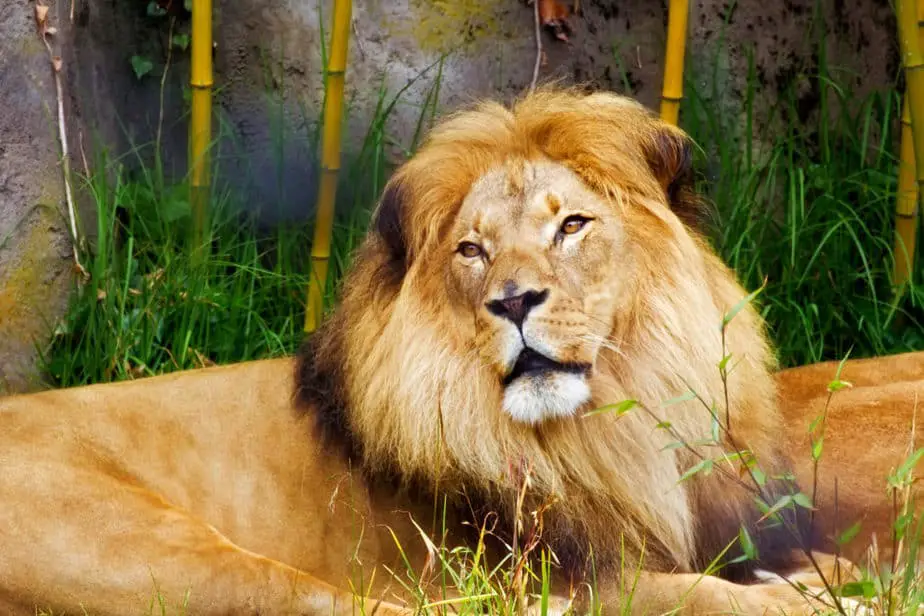
Introduction
Lions, the proverbial king of beasts, is one of the largest and powerful built cats. Asia, Africa, and Europe are the regions where they are mostly found. The prime locations are the southern part of Sahara and a smaller race of 650 Asiatic lions in Gir National Park, India. Although in nature, they are majestic creatures, lions are susceptible to diseases and death. Here, let’s know How do Lions Die?
Survival of the fittest
- Starting from the day they are born; lion cubs are more susceptible to becoming prey to nature’s wild game. They require a lot of care and comfort. Lionesses are very protective of their cubs. They focus their time on protecting and caring for them until they mature and reach a hunting age. Female lions sometimes leave their pride to give birth to the cubs and return only when their cubs reach a mature age. Sometimes, this leads to female lions rejecting male lions for mating. The male lions will kill the cubs, to mate with the female lions, which often leads to battling the intruding male lions to protect her cubs.
- The cubs could also be killed in situations where a new alpha male lion takes over the existing lion’s pride, killing the older lion of the pride; they kill their cubs, as they have no interest in raising another lion’s cubs.
- Cubs are also vulnerable to abandonment. Either the mother rejects them or they die after birth. It is hard for a cub to survive without their mother, as they are vulnerable to attacks from coyotes, hyenas, and wild dogs. Healthy lions in normal conditions survive in the wild for 12-18 years.
Viral diseases, epidemic, endemic
- Another threat to the lion population is infections by pathogens. In 2019, 23 Asiatic lions died, the cause was the Canine distemper virus; a disease that affects domestic dogs, coyotes, pandas, wolves, large cats, and raccoons. The symptoms are-Fever, discharge from eyes and nose, footpads, diarrhea, swelling in the eyes; the severity of these symptoms could lead to death. It also affects the respiratory, gastronomical, and central nervous systems of the animal.
- Babesia is a parasite transmitted through tick bites. Parasitic infections such as Babesia can lead to epidemic viral infection, which was the case for the canine distemper virus epidemic in 2019.
- Another epidemic disease is Bovine tuberculosis, Feline Parvovirus; the symptoms were diarrhea, vomiting, and depression, which mostly affect cubs. Lions are also vulnerable to Feline calicivirus, feline coronavirus, and feline infectious peritonitis. The virus causes an accumulation of fluid in the stomach and causes difficulty in breathing and eventual death.
- Trypanosomes, Theileria Hepatozoon are other parasitic hemoprotozoa that affect lions. Although lions have genetically adapted to most of these parasitic infections, extreme wildlife conditions make lions vulnerable to epidemic diseases.
Human Intervention and Exploitation
- For the lack of predators that lions do not have in nature, human interference compensates for it. As challenging wildlife can be, human intervention pushes these big cats out of their habitats to hunt in human-populated areas. The expanding human population and settlements, where farmers retaliate, forcing them to kill the lions.
- The weaker lion population is falling victim to hyenas, leopards, buffaloes, and elephants. Wire snares, gin traps are also lion killers. The poachers kill lions for their bushmeat, animal poaching, indiscriminate killing, excessive trophy hunting.
- Trophy hunting affects the lion population, especially since male lions are most sought for hunting. This can destroy an entire pride and wipe out healthy lion genes. Only 15,000-32,000 lions exist in Africa.
- For trophy hunting, where preferably the male lions of pride are killed, it disturbs the societal structure of the pride. The remaining male lions fight each other. They kill the cubs of the older lion to start their pride. The females and the grown-up lion cubs struggle to survive in the wild after dispersing from the pride. Because of human intervention, the tragic aftereffects of poaching and trophy hunting have devastating effects on the group of lions and the species.
- Older male lions eventually survive harsh wildlife, are pushed out of their pride, and will eventually succumb to the harsh wildlife. They mostly struggle to catch larger prey and resort to catching small animals, such as porcupines and eventually die of wounds or starvation. They estimated that only 6 out of 100 male lions die from age-dependent causes.
- There were unnatural deaths, between 2019 and 2020 in Gir National parks, where 152 cubs died due to accidents such as falling in open wells or being hit by vehicles, trucks, virus infection from contaminated meat for the lions in the enclosures.
LIONS & WILDLIFE CONSERVATION ACTIVITIES
- Conservationists work diligently with communities to create awareness about the value of the big cat. They help them build enclosures to protect livestock from lions and help them avoid conflict. One such example is the conservation by African wildlife foundation working with Ruaha communities called Ruaha Carnivore Project to protect big cats and help the Ruaha community.
- AWF has also established a five-year anti-poaching strategy funded by Foundation for Environment and Development in Cameroon and German Development Bank. They support rangers on mobile with fuel, medicines, equipment and have encouraged anti-poaching.
- They have also established sustainable enterprises with local communities, enabling them to lead better lives and stop bushmeat hunting, saving wildlife, including the lion population.
How do Lions Die?
